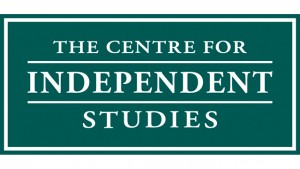Home » Commentary » Media Release » MEDIA RELEASE: Budget 2016: Timid Turnbull tinkers at top and bottom
 CIS policy experts share their ‘first glance’ assessment of the Budget, with more detailed analysis to follow during the next couple of days as they unpick and unpack all the details.
CIS policy experts share their ‘first glance’ assessment of the Budget, with more detailed analysis to follow during the next couple of days as they unpick and unpack all the details.The 2015/16 Budget has no credible plan to reduce expenditure and return the budget to balance, according to policy experts and economists at The Centre for Independent Studies.
“Far from tackling Australia’s spending problem, Treasurer Scott Morrison keeps spending at near record levels,” CIS Research Manager Simon Cowan said.
“Government spending remains at 25.8% of GDP the same level as 2015/16, and only falls to 25.2% by the end of the forward estimates.
“Government spending will burst past the $500 billion a year mark before the end of the decade.
“The Treasurer has repeated his predecessor’s mistake of relying on future revenue increases to return the budget near balance: receipts continue to rise far above their historical average, increasing by 1.2 percentage points of GDP over the next four years.
“The budget does little to tackle the core areas of spending growth in health, welfare and education, which continue to be the fastest growing areas of government.”
Superannuation
“Superannuation changes, including reducing the threshold at which additional contributions tax kicks in and a rebadged low income superannuation tax offset, do not address the core problem of pension dependence,” Mr Cowan said.
“The government brags that 96% of people will be no worse off, yet all their changes will do is increase complexity — they will do nothing to increase the number of people self-reliant in retirement.”
Income tax and bracket creep
CIS Research Fellow Michael Potter condemned measures to combat bracket creep by increasing the 32.5 per cent marginal tax threshold from $80,000 to $87,000 as inadequate.
“This measure does nothing to address bracket creep for the majority of taxpayers,” Mr Potter said. “The government should deliver a more substantial personal tax cut of $12.5 billion in 2017-18 and then index the tax thresholds.”
Corporate tax
Mr Potter applauded the move to reduce corporate tax, but said it didn’t go far enough. “The government has some good measures, reducing the corporate tax burden from 30% to 25%, but it won’t reach this level until 2025/26. In the meantime, Australian companies remain uncompetitive.
“There are concerns that the funding for this tax cut, including a diverted profits tax, could harm the very investment the tax cut is meant to promote. And measures to combat so-called multinational tax avoidance rarely produce the revenue claimed.”
Youth Jobs PaTH Programme
CIS Research Fellow Dr Patrick Carvalho was cautiously optimistic about plans for young jobseekers. “The Youth Jobs PaTH Programme addresses some barriers for longer term unemployed youth,” he said.
However he cautions it does not solve the underlying problem: “at the heart of the problem lies our complex workplace regulations structure, including prohibitive penalty rates that ultimately penalise the most vulnerable jobseekers. The budget doesn’t address these issues.”
Indigenous funding
It is good to see that the Government will redirect $23.1 million in 2016-17 from Indigenous Business Australia (IBA) to the Department of the Prime Minister and Cabinet to support Indigenous entrepreneurs.
“A recent Ernst & Young review of IBA highlighted a number of problems with IBA, specifically, that it was not supporting Indigenous businesses effectively, not providing capital in a timely manner, and had a confusing number of programs,” Sara Hudson, Research Fellow and Manager of the Indigenous Research Program, said.
Education
One area the government has stuck to its guns is education policy, choosing not to fund the final years of Gonski, instead budgeting for a 3.6% annual increase — the minimum rate legislated in the Australian Education Act 2013.
Head of the CIS FIVE from FIVE reading project, Dr Jennifer Buckingham, said: “there is merit in some of the policy reforms attached to the funding, including the early assessment of reading, but others — such as mandating the school subjects students must study at senior level to be eligible for an ATAR — would be difficult to implement.”
Childcare
CIS Policy Analyst Trisha Jha warned the government’s childcare strategy would not help more women into work. “Despite the deferral of the Jobs for Families childcare package, the Budget shows spending on an entrenched upward trajectory. These policies will not substantially increase women’s workforce participation. More work is needed to address the crucial issue of supply of places, and the impact of the tax-transfer system on work incentives,” Ms Jha said.
Media contact: Communications Director Karla Pincott 0407 716 752 kpincott@cis.org.au


MEDIA RELEASE: Budget 2016: Timid Turnbull tinkers at top and bottom